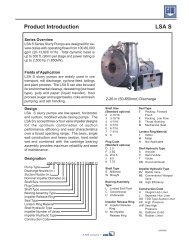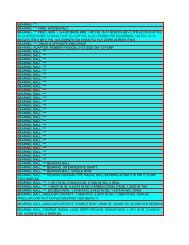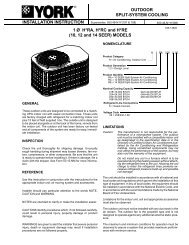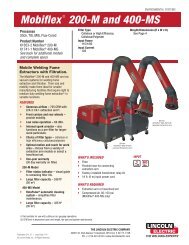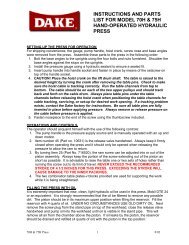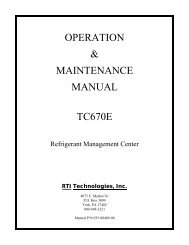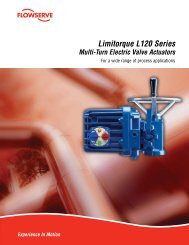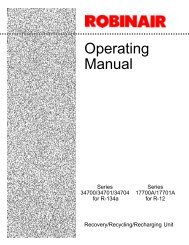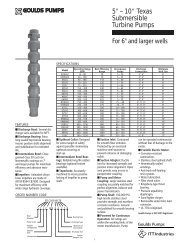Exide Absolyte IIP V0 MSDS - Battery Web
Exide Absolyte IIP V0 MSDS - Battery Web
Exide Absolyte IIP V0 MSDS - Battery Web
You also want an ePaper? Increase the reach of your titles
YUMPU automatically turns print PDFs into web optimized ePapers that Google loves.
VII. PRECAUTIONS FOR SAFE HANDLING AND USE (CONTINUED)<br />
Waste Disposal Methods:<br />
Sulfuric Acid: Neutralize as described above for a spill, collect residue and place in a container labeled as containing hazardous<br />
waste. Dispose of as a hazardous waste. If uncertain about labeling procedures, call your local battery distributor or listed contact.<br />
DO NOT FLUSH LEAD CONTAMINATED ACID TO SEWER.<br />
Spent batteries: Send to secondary lead smelter for recycling following applicable federal, state, and local regulations.<br />
Precautionary Labeling:<br />
POISON - CAUSES SEVERE BURNS<br />
DANGER - EXPLOSIVE GASES<br />
CORROSIVE - CONTAINS SULFURIC ACID<br />
KEEP AWAY FROM CHILDREN<br />
VIII. CONTROL MEASURES<br />
Engineering Controls and Work Practices:<br />
Store and handle in well-ventilated area. If mechanical ventilation is used, components must be acid-resistant.<br />
Handle batteries cautiously. Make certain vent caps are on securely. If battery case is damaged, avoid bodily contact with internal<br />
components. Wear protective clothing, eye and face protection, when charging or handling batteries. Follow all manufacturers’<br />
recommendations when stacking or palletizing. Do not allow metallic materials to simultaneously contact both the positive and<br />
negative terminals of the batteries. Use a battery carrier to lift a battery or place hands at opposite corners to avoid spilling acid<br />
through the vents. Avoid contact with internal components of the batteries.<br />
Hygiene Practices:<br />
Wash hands thoroughly before eating, drinking or smoking after handling batteries.<br />
Respiratory Protection:<br />
None required under normal conditions. If an overcharging or overheating condition exists and concentrations of sulfuric acid mist<br />
are known or suspected to exceed PEL, use NIOSH or MSHA-approved respiratory protection.<br />
Protective Clothing:<br />
None required under normal conditions. If battery case is damaged, use rubber or plastic acid-resistant gloves with elbow-length<br />
gauntlet and acid-resistant apron, clothing, and boots.<br />
Eye Protection:<br />
None required under normal conditions. If battery case is damaged, chemical goggles or face shield.<br />
Emergency Flushing:<br />
In areas where water and sulfuric acid solutions are handled in concentrations greater than 1%, emergency eyewash stations and<br />
showers should be provided, with unlimited water supply.<br />
IX. OTHER REGULATORY INFORMATION<br />
NFPA Hazard Rating for sulfuric acid:<br />
Flammability (Red) = 0 Health (Blue) = 3 Reactivity (Yellow) = 2<br />
Sulfuric acid is water-reactive if concentrated.<br />
TRANSPORTATION:<br />
US DOT identification and description for this battery is:<br />
Batteries, wet, non-spillable, 8, UN 2800, PG III<br />
Label: Corrosive<br />
(Exceptions 173.159, paragraph (d), C.F.R. 49)<br />
For air shipments, see International Air Transportation Association (IATA) Dangerous Goods Regulations Manual, special<br />
provisions A-48 and A-67. For ocean shipments, reference International Maritime Dangerous Goods Code, P. 8121.<br />
This is to certify that the “Non-Spillable” batteries are capable of withstanding the Vibration and Pressure Differential Test, and at a<br />
temperature of 55°C, the electrolyte will not flow from a ruptured or cracked case. The batteries have been protected against short<br />
circuits and securely packaged. The batteries and outer packaging must be plainly marked “Non-Spillable” or “Non-Spillable<br />
<strong>Battery</strong>”.<br />
RCRA: Spent lead-acid batteries are not regulated as hazardous waste when recycled. Spilled sulfuric acid is a characteristic hazardous<br />
waste; EPA hazardous waste number D002 (corrosivity).<br />
Z99-<strong>MSDS</strong>-ABS<strong>IIP</strong><strong>V0</strong> 2005-05 Page 4 of 6 Rev. AD<br />
ANY PHOTOCOPY MUST BE OF THIS ENTIRE DOCUMENT



